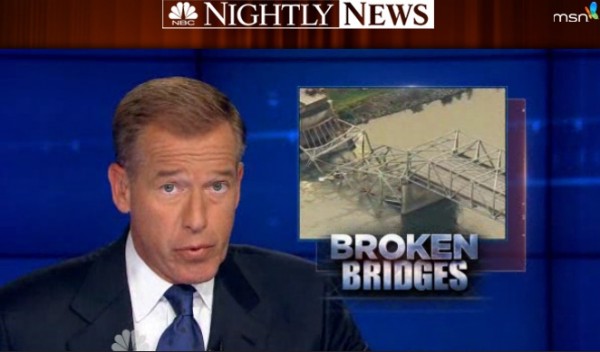Highlights from the great coverage of our bridge report
It’s easy to be cynical about our often frivolous media environment these days, but it is heartening to see the seriousness with which outlets of all sizes are treating reports about the need to maintain our aging bridges and other infrastructure. In addition to dozens of newspaper and web reports, more than 500 broadcast outlets have picked up yesterday’s release of the “The Fix We’re in For“, the 2013 edition of our report on bridge conditions nationwide.
Among the highest-profile, and best, TV stories was certainly this from NBC Nightly News yesterday evening that we embedded in the previous blog post. (Click to watch.)
In the Washington Post, Ashley Halsey looked at the impact that deteriorating bridges can have short of actually falling down:
When big bridges collapse they make news, but it generally escapes notice when decrepit bridges just cause prices to go up on almost anything that gets to the store by truck. …
The group put out a report Wednesday that uses state and federal statistics to put a fresh face on an existing issue, and to raise a question rarely heard above a whisper in Washington because Capitol Hill hasn’t come up with a good answer to it: Where will the $76 billion come from that the Federal Highway Administration says is needed to repair deficient bridges that carry 260 million vehicles each day?
Larry Copeland, writing for USA Today, noted that Congress made changes last year in the federal transportation program, known as MAP-21, that could have a negative impact on the ability of states and localities to return the most threatened bridges to a state of good repair:
In the two-year federal transportation funding bill it passed last year, Congress eliminated a dedicated fund for bridge repair. “The upshot is that bridge repair now must compete with other transportation needs,” the report says. Money previously targeted for bridge repair was rolled into a new National Highway Performance Program, which can be spent only on highways that are part of the National Highway System, which includes interstates and major state highways. Nearly 90% of structurally deficient bridges are not part of the National Highway System.




















